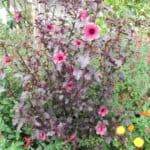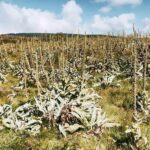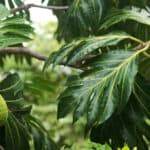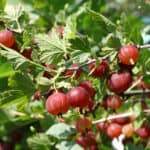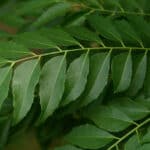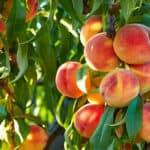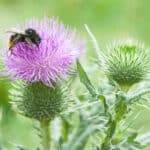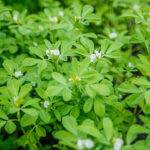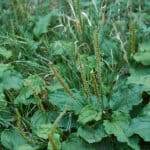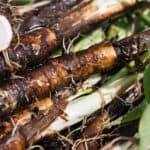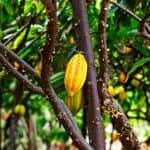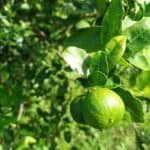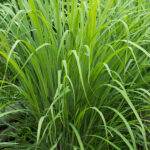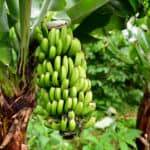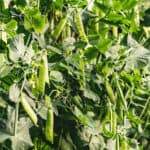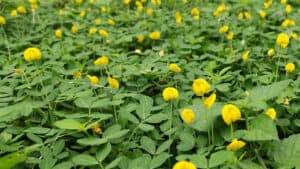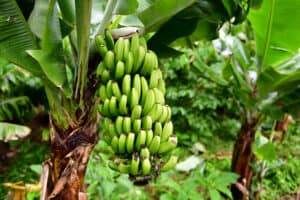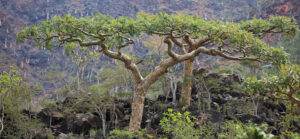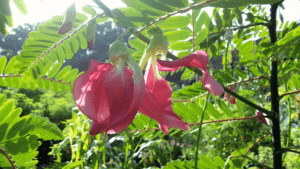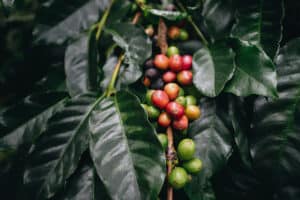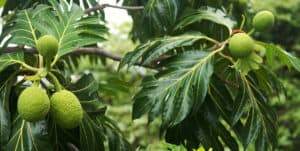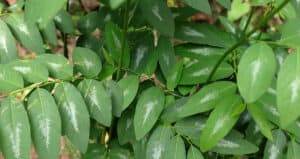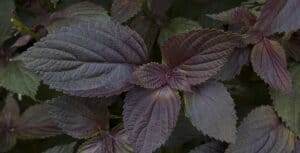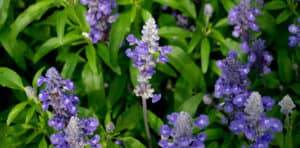Plant Overview
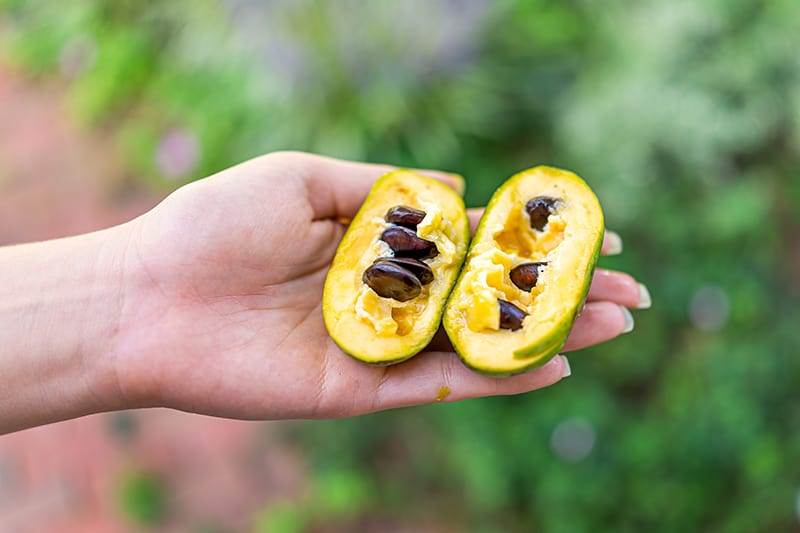
Have you ever heard of the ancient Paw Paw Tree? It’s basically the mango/ banana of temperate climate areas. Imagine a tropical fruit growing in Ohio!
Are you intrigued? Keep reading to learn more about how to incorporate this incredible plant into your food forest.
Paw Paws (Asimina Triloba) are a native fruit to North America. They were traditionally cultivated by indigenous tribes that span from Michigan down to Florida. In fact, Paw Paw is the biggest fruit tree that can grow in North America!
It is no wonder why this was a cherished plant by Native Americans, particularly the Shawnee Tribe. They had a whole month dedicated to the Paw Paw tree!
This is a very giving plant. An adult tree can produce around 50lbs of fruit every year! It has been responsible for feeding many people in years of drought.
Not only is the fruit delicious and filling, other parts of the plant are medicine! You can grind up the bark, leaves, and seeds to make teas to combat various illnesses. It is particularly known to reduce fever and inflammation.
The tree can live up to 120 years and will start producing fruit perennially after year 5 from seed.
Continue reading to find out how to grow Paw Paw!
Propagation & Planting

There are many different ways to start a Paw Paw in your garden. With most plants, you have the option to start from seed or transplant.
Young Paw Paw trees are very delicate. If you put a small rootstock into your food forest, it can easily die. The easiest way to establish Paw Paw in your system is to transplant a tree that is between 1-2 years old.
They do not take well to transplanting, so do it slowly and with care. Dig a hole double the size of the rootball. Make sure to loosen the soil around the plant so that the roots can spread easily.
Place the plant gently into the hole and loosen the soil around the roots. Once the tree is upright, fill the soil back into the hole to secure it. Step around the plant to make sure it is firmly planted into the ground.
Paw Paws are not self-fertile, so this means you need at least two to produce fruit. Do not skip this important step if you want to reap the benefits of the harvest! They are pollinated by flies that move from male to female flowers.
Another unique trait is that the Paw Paw is tolerant of the juglone chemical that is emitted by Black Walnuts. This means it can happily be planted by Black Walnut trees. Many other plants have a bad reaction to this chemical.
This tree prefers to be in a more acidic soil. Keep the PH between 5-7. You can use things like pine needles and coffee grounds to increase the acidity of your soil.
It is possible to propagate Paw Paw from seed, but you need to wait for a year to put it into the ground.
Growth & Care

Paw Paws will do best in full sun. While they can tolerate partial shade, the fruits will be smaller and less productive. In the first year of its life, it needs to be shaded.
After that, it should be exposed to full sun. This means at least 6-8 hours of sunlight per day.
Paw Paws can grow to up to 25 feet tall. If you prune it, it can function as an understory plant or even a shrub in your food forest.
Pruning dead and damaged branches is important for any plant. The best time to prune Paw Paw is when the tree doesn’t have leaves in early spring or late winter. You can do this every year to encourage new growth.
It is a low-maintenance and hardy plant once established. If you want, add a shovel full of compost every 2 months around the base of the plant. Other than that, you shouldn’t need much outside fertilization.
It is important that once you plant the tree, you mulch around the base of the plant. This will retain moisture and nutrients for the soil. Mulch also keeps weeds out.
The better you mulch at the beginning, the less work you have to do over time. You can use things like wood chips, straw, and cardboard to mulch.
Paw Paw grows in Hardiness Zones 4 through 8. It likes warm and humid summers.
Water whenever the soil gets dry. The best way to test if your plant needs water is to put your finger into the soil to see if you feel moisture.
If it is dry, give it at least 3 inches of water.
Make sure that your soil is well draining. The tree will not thrive if the soil gets too wet.
Harvesting

Paw Paw flowers from May- June and the fruits will be ready to harvest in the fall. Start looking for fruit in mid-august. However, you will need to harvest quickly because the fruit only remains on the tree for about 3 weeks.
If you want to know if a Paw Paw is ready to harvest, touch the skin. It should feel slightly soft. You may also see the skin color of the fruit change from green to yellow.
The best way to start harvesting is to shake the trees. The ripe fruits will fall to the ground. Make sure you pick them up quickly because animals love to eat Paw Paw!
You can put a tarp underneath the tree to harvest cleanly. Do not worry if you see any dark spots on the fruit, it is perfectly normal.
Processing & Utilizing
Once you harvest Paw Paw, it is time to enjoy! In order to get the best flavor, eat them fresh. You can store them in the fridge for a month.
If you want to keep them for longer, remove the fruit from the peel and freeze it.
You can use Paw Paws as a replacement for anything that calls for mashed bananas. For example, you can make Paw Paw bread. Aside from that, be creative!
Chefs use Paw Paw in things like salads, creme brulees, and smoothies.
Putting Paw Paw in your food forest will never be disappointing. It is a giving and delicious tree that is quite easy to maintain. Have fun growing!



